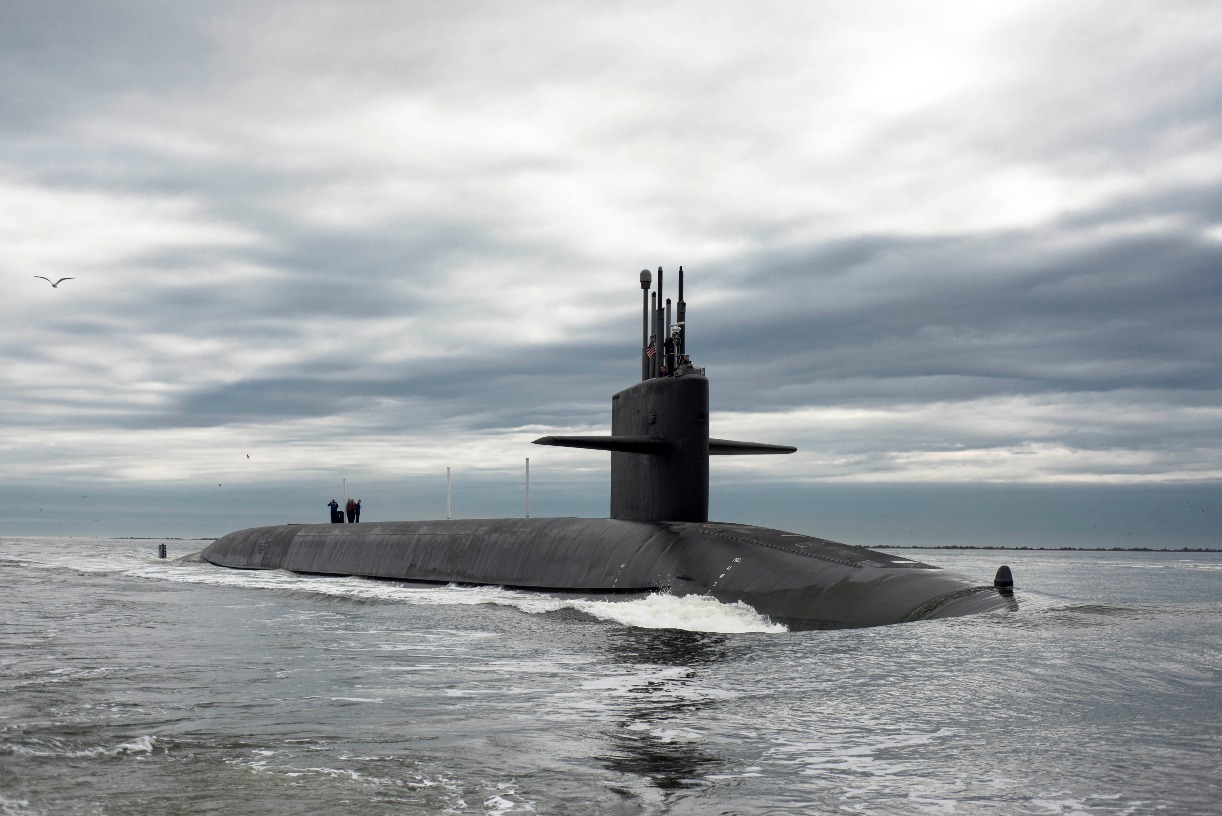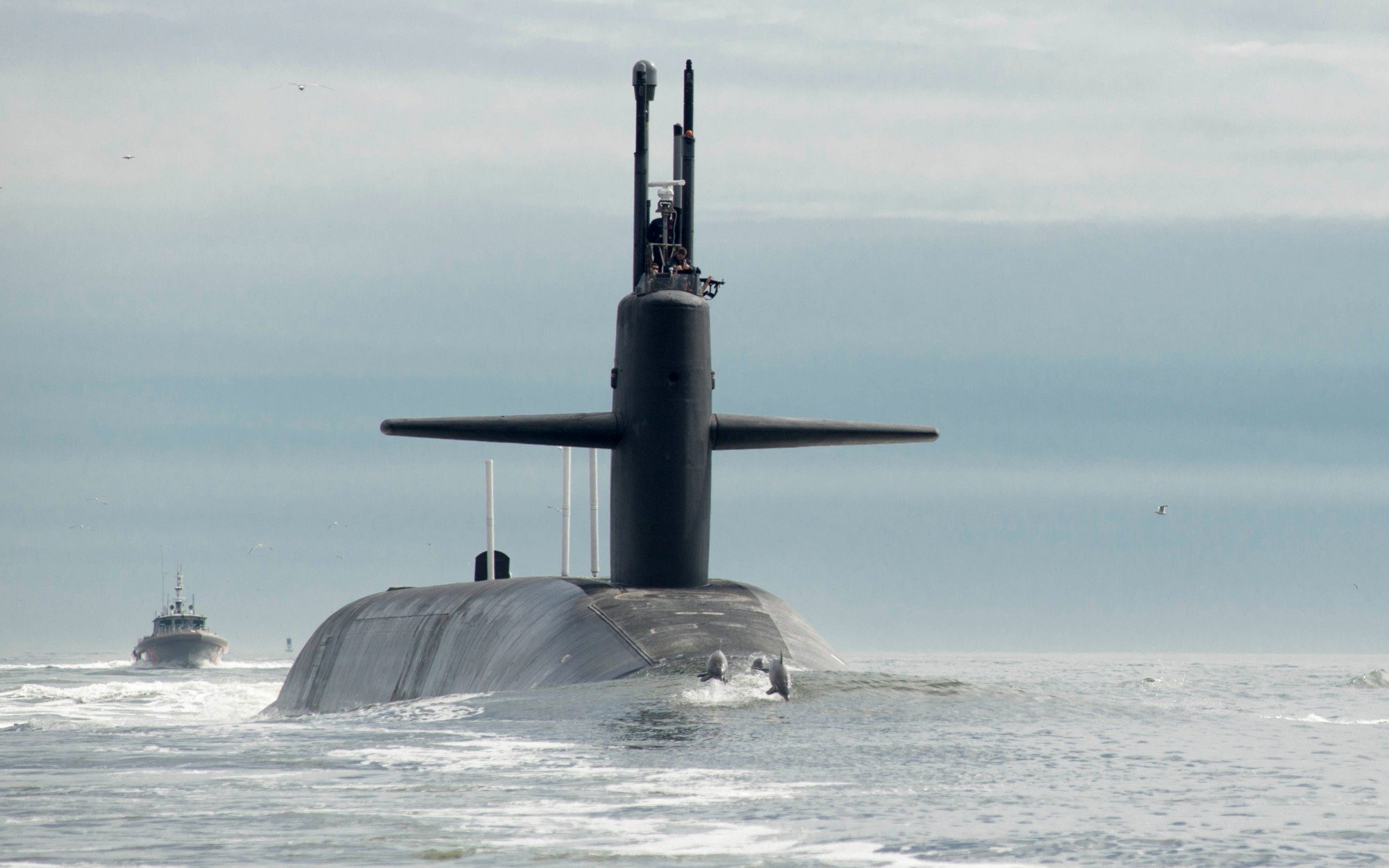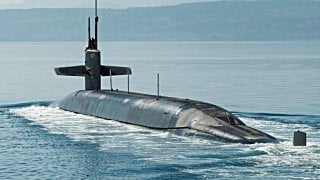U.S. Navy's 'Triple Submarine Surfacing' Sent Shivers Down China's Military Spine
In 2010, the United States showcased its strategic power when three Ohio-class submarines surfaced in the Pacific, signaling a potent warning to China. These nuclear-powered subs, capable of launching 24 Trident II ballistic missiles each, represent one of the U.S. Navy's most formidable assets.
Summary and Key Points: In 2010, the United States showcased its strategic power when three Ohio-class submarines surfaced in the Pacific, signaling a potent warning to China. These nuclear-powered subs, capable of launching 24 Trident II ballistic missiles each, represent one of the U.S. Navy's most formidable assets.

-This unprecedented move came amidst heightened tensions and geopolitical provocations from China, particularly in the South and East China Seas.
-The deployment was a clear message from the Obama administration, emphasizing America's military prowess and deterring further Chinese aggression.
-Despite advancements in China's anti-submarine warfare capabilities, the Ohio-class submarines continue to serve as a critical element of U.S. nuclear deterrence.
Inside America's Strategic Submarine Fleet: The Power of the Ohio-Class
America’s Ohio-class submarine is a nuclear-powered sub that can fire scores of ballistic missiles. It is the third-largest submarine class in the world. These silent killers carry 24 Trident II missiles into battle. They are one of the U.S. Navy’s most secret power projection platforms.
But America’s enemies understand the kind of firepower these boats can deliver on a target at a moment’s notice. That’s why China’s leadership had a collective stroke when three Ohio-class submarines surfaced in the Pacific.
In essence, three undersea weapons platforms capable of firing a combined 72 ballistic missiles at any target in the Indo-Pacific suddenly appeared on Beijing’s sonar. It was a very big “Uh-oh” moment in the minds of many Chinese leaders. In fact, China’s leadership vowed to not allow such an action to recur.
But in 2010, China lacked any credible defense against America’s Ohio-class submarine missile threat. All they could do was take notice of the clear signal that Washington’s leadership was sending to Beijing: Don’t mess with us today, pal.
What was occurring at this time to prompt the Navy to send three of its valuable ballistic missile subs into the range of enemy weapons?
The Political Context of the Moment
The moment that Barack Obama was elected in 2008, China (and the world) understood that this was not a normal American presidential election and transition. The country was in the midst of the worst financial crisis since the Great Depression. America was humiliated in Iraq and was losing in Afghanistan.
All the things that America—indeed, the world—had taken for granted in terms of what America stood for and what its capabilities had been thrown out the window.
Not only was America experiencing a transition from one president to another, but the 2008 election saw the transition of power from one political party, the Republicans, to another, the Democratic Party. What’s more, Barack Obama was America’s first African-American leader. And the forty-fourth president was young.
So the Chinese government had spent the lead-up to Obama’s inauguration in January of 2009, as well as his first year in office, challenging the new American president. The greatest challenge China posed to the United States came in the form of manmade Chinese islands that were illegally built in the South China Sea, as well as provocations against Japan in the East China Sea over control of the Senkaku Islands.
These provocations went unanswered. Obama was advised by his China hand, Kurt Campbell, to ignore the provocations from Beijing in an effort to stay focused on building a better relationship with Beijing. Paradoxically, though, the more Obama ignored China’s threats, the more belligerent they became, and the less inclined to work with America.
There were things that Obama wanted and needed from China at the diplomatic level. Not only in terms of trade and economic deals, but regarding newer issues, such as cybersecurity agreements. Unable to make any headway on these crucial matters, the Obama administration announced its “Pivot to Asia.”
America signed basing agreements with an assortment of nations in the region, notably with Australia, and tried to focus its forces away from the Middle East to the Indo-Pacific. In this geopolitical context, the surfacing of the three Ohio-class submarines is best understood.
Obama was telling China to behave.
It worked, to a point. China calmed down. They started dealing with Obama. Of course, the substance of those agreements was lacking in the end. Nevertheless, Obama started getting what he wanted from China at the diplomatic and political levels. With tensions cooled down by Obama’s third year, America moved on.
Sadly, Washington was distracted yet again by the terrible events in the Middle East during those years. As a final distraction, Russia invaded Eastern Ukraine and annexed Crimea.
Lost Momentum: Overcome By Events
Out went the much-ballyhooed Asia Pivot. By the end of the Obama years, the U.S. was less focused on the Indo-Pacific than it had been at its start. Meanwhile, China, having learned a lesson from three Ohio-class submarines surfacing within firing range of their shores, implemented an entirely new shipbuilding program to outmatch the Americans. Beijing also invested in cutting-edge detection and anti-submarine warfare capabilities.
While we can all hope that the Biden administration has the gumption to overmatch whatever countermeasures China has built over the last decade, the fact remains that Washington might not be able to rely on the kind of deterrence it exercised in years past. Still, the sudden surfacing of three U.S. ballistic missile subs in one’s own proverbial backyard ought to give any power, regardless of countermeasures, significant pause.
It did in 2010.

Author Experience and Expertise: Brandon J. Weichert
Brandon J. Weichert, a National Interest national security analyst, is a former Congressional staffer and geopolitical analyst who is a contributor at The Washington Times, the Asia Times, and The-Pipeline. He is the author of Winning Space: How America Remains a Superpower, Biohacked: China’s Race to Control Life, and The Shadow War: Iran’s Quest for Supremacy. His next book, A Disaster of Our Own Making: How the West Lost Ukraine, is due October 22 from Encounter Books. Weichert can be followed via Twitter @WeTheBrandon.
All images are Creative Commons or Shutterstock.
From the Vault
Russia Freaked Out: Why the U.S. Navy 'Unretired' the Iowa-Class Battleships
Battleship vs. Battlecruiser: Iowa-Class vs. Russia's Kirov-Class (Who Wins?)


